New Products For the Producer’s Bottom Line
BY AsphaltPro Staff
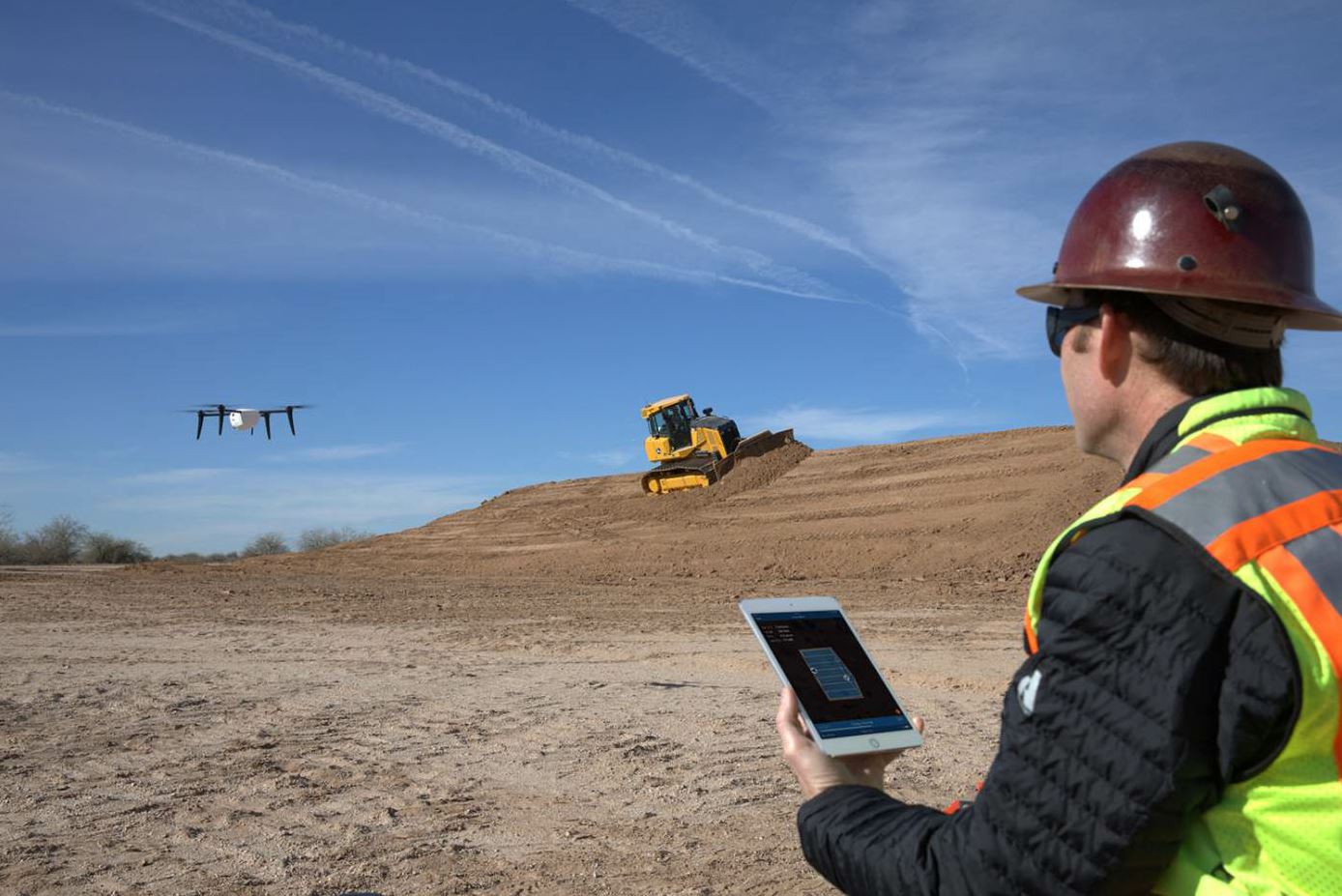
This month’s product gallery focuses on equipment and services that are designed to help the bottom line of the asphalt and aggregate producer. We picked up a plethora of information on new and/or updated products during the AGG1/World of Asphalt 2018 tradeshow in Houston March 6 through 8, but one of the buzz words heard around the convention center time and again was drones.
General contractors use these for site mapping and 3D imaging of their projects, but producers can leverage drone technology to make data-gathering more efficient and more precise than it was even when we introduced the idea in the March/April 2016 issue. Updates to software, hardware, storage, and more make drone flights and data a useful tool for anyone with a facility to map and stockpiles to manage.
The Federal Aviation Administration (FAA) estimates there will be up to 7 million drones flitting about by 2020—not all of them being used in business purposes. For those reading this column, we’re interested in business purposes. Brian Wood of the Paving Asphalt Industry of Kentucky (PAIKY) joined Matt Riggle of Bluegrass Testing, Louisville, Kentucky, to educate attendees during the People, Plants and Paving conference at WOA.
Wood reminded the audience that any drone between 0.5 and 5.5 pounds in weight must be registered with FAA. When flying the drone, you must keep it below 400 feet and maintain a line of sight.
Despite warnings and precautions, FAA reports about 250 safety incidents per month. That means insurance is a good idea.
Here’s the bullet point list of tips from Wood:
1. Register with FAA (there are civil and criminal penalties if you don’t)
2. Comply with Part 107 rules and regulations
3. Complete the Airman Knowledge test from FAA
4. Learn your drone
5. Get property and liability insurance
We’ll cover all of this in depth in this year’s rock issue. Watch for the August issue to hit your mailbox. The B4UFly app remains an excellent resource for information and reporting on conditions, as we indicated in the early 2016 article.
As an example of newer tech out there, DroneDeploy out of San Francisco announced Feb. 15 the release of Live Map—a first-of-its-kind feature that allows any drone operator to create real-time maps in the field with their iOS device.
Users plan a flight, take off and see maps render on-screen during flight—without the need for internet or cell connection. Customers no longer need to experience image upload and processing times traditionally required with mapping and photogrammetry software. They get an aerial view of their jobsite, field or project in seconds, according to the developer, which enables them to make real-time decisions.
“Live Map is really the re-imagining of drone mapping,” DroneDeploy CEO Mike Winn said. “There’s no SD cards, no uploads and no waiting.”
Since the original Live Map inception, mobile devices have doubled in computational power. The developer states this has allowed DroneDeploy to improve map quality 400 percent by leveraging the latest devices and computer vision algorithms. Customers can now instantly turn hundreds of acres into consumable maps and share that with collaborators without going back to the office, via instant cloud-syncing across devices. If deeper analysis is necessary, users can also create higher-resolution 2D maps from the same flight data.
The company believes Live Map is the future of mapping—mobile, real-time and in-the-field. As drones and devices continue to improve, the developer anticipates Live Map will evolve to enable even faster, higher-quality mapping and analysis for any terrain. You can learn more about DroneDeploy and Live Map by visiting here or joining the conversation on Twitter @DroneDeploy.
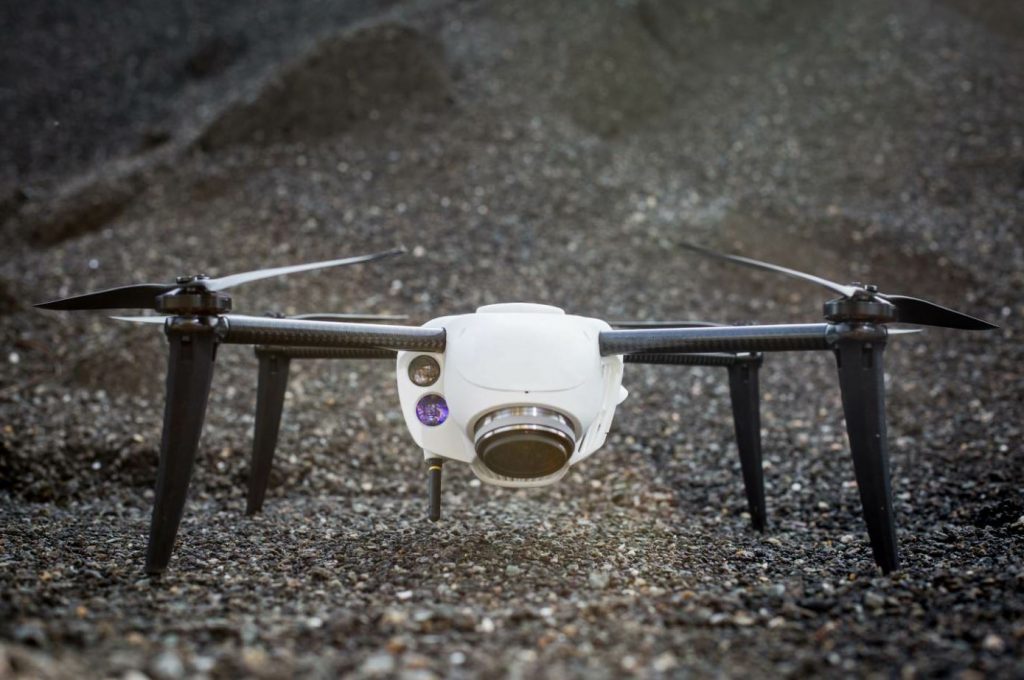
The Kespry drone gathers images and data as it flies each flight plan.
At AGG1, we visited with George Mathew, CEO and chairman of Kespry, Menlo Park, California. His company provides contracting services for more than 170 aggregate companies as “an essential part of the way we work.” Providing subscription-based volumetric mapping takes the heavy lifting off the aggregate manager’s back. One of those more recent clients is Stoneco of Michigan.
“Stoneco uses the Kespry system monthly at all of our operations for inventory management and it has allowed us to increase our accuracy, and have same day results,” Austin Fisher said. He’s the assistant operations manager and quality control manager for Stoneco of Michigan. “The speed of obtaining data from the Kespry system has allowed us to tweak changes to our operations days faster than old methods, providing us with virtual real-time inventory checks that increase our operations’ efficiencies.”
CSA Materials in Texas also uses the Kespry platform to optimize stockpiles to meet customer demands and business forecasts. “Inventory management can be a really daunting task,” CSA Materials’ Environmental Manager Brian Biggerstaff said. “Now, the Kespry system lets us keep a historical record of each flight we make. I can watch stockpiles at remote locations. If I measure one in March, June and September, I can quickly visually go between those dates and I can see that stockpile and where people have taken material from it, and how much has been removed from it. CSA Materials is pleased with the continuous improvement Kespry shows. As Kespry evolves, so does our drone program. We have grown from stockpile measurements into mine planning and other areas.”
For more information on Kespry’s systems or exclusive alliance with John Deere, visit here.
While gathering data from the sky is extremely cool, there’s plenty of other new tech and iron hitting the scene for plants and production. Here’s a quick roundup of a few new products designed to help your bottom line.
Conveyor Components
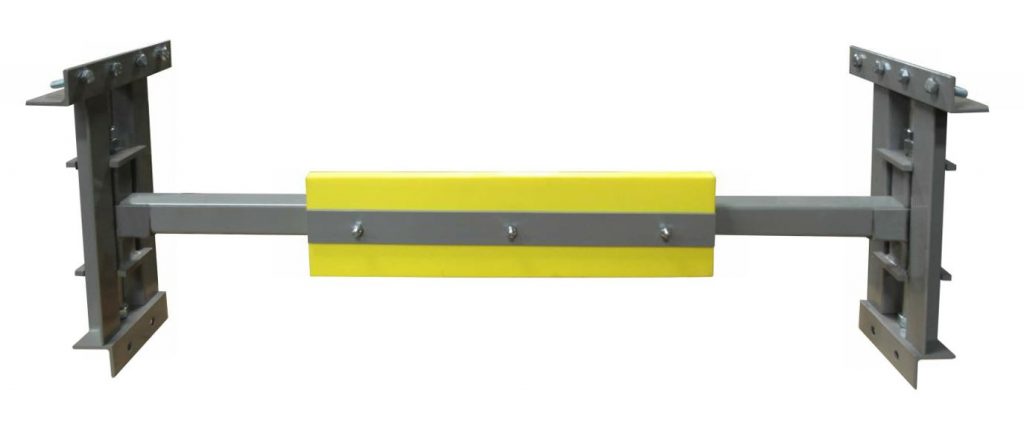
Model LP blade belt cleaner
The Model LP from Conveyor Components Company, Croswell, Michigan, is a heavy-duty, spring-loaded, rubber wiper single-blade type belt cleaner designed to provide maximum cleaning effectiveness at an economical price. The Model LP works on a variety of carryback materials ranging from construction materials such as rock, sand or gravel to left-over process materials.
This belt cleaner automatically self-adjusts after the initial installation, until the blade stop assembly is activated. At which time, the wiper blade can be flipped over and used for an additional amount of time. The Model LP uses 80 durometer rubber to provide long wiper blade life, and the wiper blade is easily changed when required, according to the manufacturer. Urethane (90 durometer) wiper blades are also an option.
The mounting flange allows for easy adaptation to most conveyor rails, and the compact version fits in size-challenged spaces.
For more information, contact (800) 233-3233 or info@conveyorcomponents.com.
E Instruments
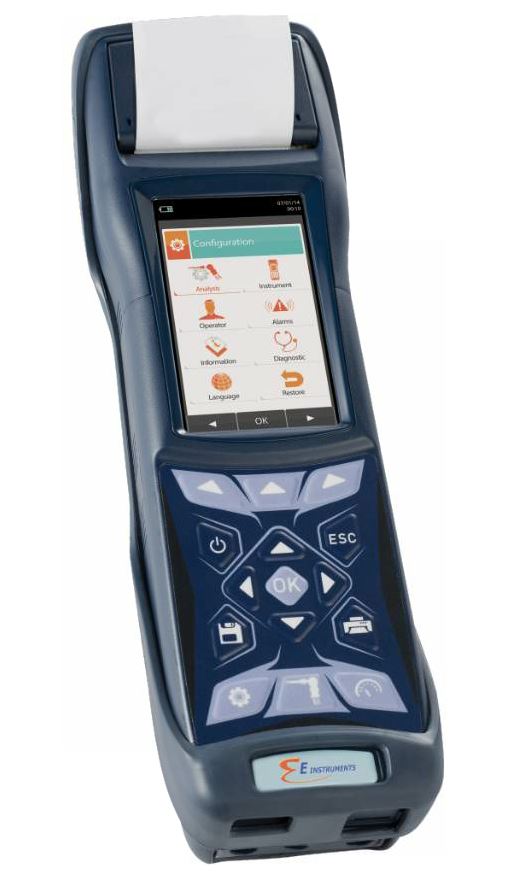
E1500 combustion emissions analyzer
The E1500 Hand-Held Combustion Emissions Analyzer from E Instruments, Langhorne, Pennsylvania, is designed to measure CO and O2 from high efficiency and condensing boilers, burners, engines, turbines, kilns, furnaces, incinerators and other industrial combustion processes.
Featuring a large color display and expanded internal memory, the E1500 lets the user see and save sample data without worrying about running out of memory.
The E1500 also features pre-calibrated, field replaceable sensors designed to allow for easy diagnostics and replacement to reduce downtime and costly repair charges.
For more information, contact Bill Freed at (215) 750-1212 or bfreed@e-inst.com.
EvoQuip

The Cobra 230 has a small footprint for crawling and crushing on tight jobsites.
EvoQuip, of Terex Corporation, showcased the newest addition to its impact crushing range at WOA: the Cobra 230. The crusher has been on test with J&V Construction in Ireland.
Gerd McCann, J&V Construction’s director, said, “The EvoQuip Cobra 230 has managed to surpass our expectations, handling a mix of difficult rock and heavy duty recycled concrete with ease, and turning it into products we have been able to reuse on our construction sites.”
The Cobra 230 offers rapid setup and intuitive controls so the operator can be crushing minutes after unloading the machine, according to the manufacturer. The operator can also adjust the crusher setting without tools using the hydraulic assist that comes standard.
A number of key design features ensure optimal material flow through the crushing process. For example, as material moves from the feeder through the impactor onto the product belt, each section becomes wider, ensuring an unrestricted flow. The under-crusher clearance, short distance from the crusher discharge to the magnet, and the ability to lower the product conveyor while running are additional efficiencies.
The Cobra 230 uses direct drive to power the impact crusher. Two independent hydraulic controlled aprons allow the operator to optimize material throughput and reduction while getting best fuel efficiency.
As mentioned in this month’s International Snapshot, the Cobra 230’s compact footprint makes it easy to transport and ideal for working in tight or urban areas. The machine is designed to come directly to the site to crush and screen waste from demolition projects.
For more information, contact Michelle.Murphy@terex.com.
Haver & Boecker
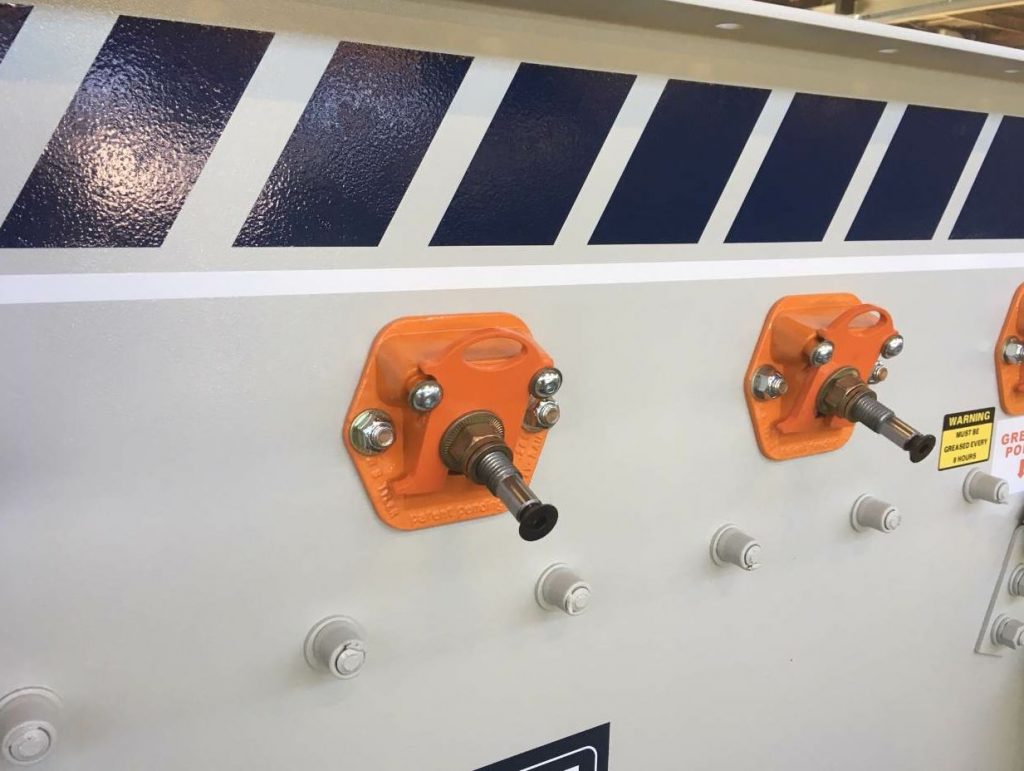
Haver & Boecker offers new configurations of its Ty-Rail quick-tensioning system, cutting the time needed to replace screen media in half.
Haver & Boecker, St. Catharines, Ontario, showcased new configurations of its patented Ty-Rail™ quick-tensioning system for screen media at AGG1 in Houston. The patented Ty-Rail system is designed specifically for Haver & Boecker’s Tyler brand of vibrating screens and now comes standard on all new F-Class and T-Class machines with 3-bend tension rails.
The system is designed to solve the age-old problem of time-intensive screen media change-outs. Replacing tension rails is typically time consuming and requires removing and replacing many pieces of hardware per screen section. Washers or bolts are often dropped or lost in the process, which adds to downtime and parts costs.
Ty-Rail eliminates this problem by combining the tension rail and all of its hardware into one piece. The new Ty-Rail angle box designs provide the ability to change screen media in half the time, according to the manufacturer. Each Ty-Rail package includes two tension rails, eight angle boxes, eight bolts and all the hardware required to change one screen section. Once installed, each rail becomes a singular, removable piece since the bolts remain attached to the rail, and the angle boxes remain attached to the vibrating screen.
For more information, contact (800) 325-5993 or info@havercanada.com.
Siemon
Siemon, Watertown, Connecticut, a leading global network infrastructure specialist, announced its new line of PowerMax Power Distribution Units (PDUs) that range from basic and metered to a full line of intelligent PDUs that deliver real-time power information with varying degrees of intelligent functionality.
Available in both single phase and three phase power for efficiently powering active equipment in today’s data centers, UL-listed PowerMax PDUs feature a single input in a variety of currents and voltages. Multiple output options are available to distribute reliable 120V or 208V to rack mounted IT equipment, ranging from 1.4kW to 15kW.
PowerMax basic PDUs are designed to provide a robust means to reliably distribute everyday power to IT equipment, while PowerMax metered PDUs provide visual monitoring capability through a built-in LED meter that displays real-time power data. Using an embedded web-based intuitive interface, PowerMax intelligent PDUs monitor and communicate power usage and environmental information to help reduce energy costs, optimize power usage effectiveness (PUE) and ensure uptime. They are available in monitored for device-level monitoring, smart for outlet-level monitoring, switched for individual outlet control, and managed for both individual outlet control and individual outlet monitoring.
PowerMax intelligent PDUs offer several advanced features such as IP address sharing that allows up to four intelligent PDUs to share a single IP address in a master-slave hierarchy and sensor ports for monitoring temperature, humidity and other environmental conditions at the cabinet level.
For more information, visit here.
